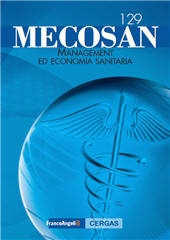The "Snail Model" : Mapping the patient journey through an experiential standpoint
93-107 p.
BackgroundPatient journey mapping is widely considered a helpful tool to enhance the patient experience by supporting practitioners in the provision of patient-centered care. PurposeThe ultimate goal of this paper is to introduce an all-encompassing framework that integrates the experientialdimension of care into the major phases of the patient journey, as well as identify how different patterns of behavior may influence the therapeutic path. MethodologyThe analysis is divided into two parts. The first involves the theory adaptation of a marketing framework to healthcare in the context of the Experience Economy.The second consists of the theoretical conceptualization of a patient journey map called the "Snail Model". FindingsThe results show how the interaction between health literacy and involvement may unearth four typologies of patients: resigned, informed, expert, and responsible.
Furthermore, the following stages of the patient journey are identified: I) health communication policies and prevention programs; II) health service access and diagnostic process; III) patient involvement and therapeutic adherence; IV) doctor-patient communication failure and therapeutic non-adherence. Practice implicationsIt is crucial for practitioners to adopt an experiential standpoint when providing care. The theories presented in this study should assist them in clustering patients according to their behaviors, as well as monitoring the effectiveness of the patient journey. ConclusionThe NHS should ensure effective prevention programs, equal access to healthcare, and adherence to treatments.Overall, patient involvement is essential to improving the quality of care and the whole patient experience. [Publisher's Text].
-
Articles from the same issue (available individually)
-
Information
DOI: 10.3280/mesa2024-129oa18725
ISSN: 2384-8804
KEYWORDS
- Patient experience, Patient journey mapping, Prevention and control, Early diagnosis, Patient participation, Treatment adherence and compliance


